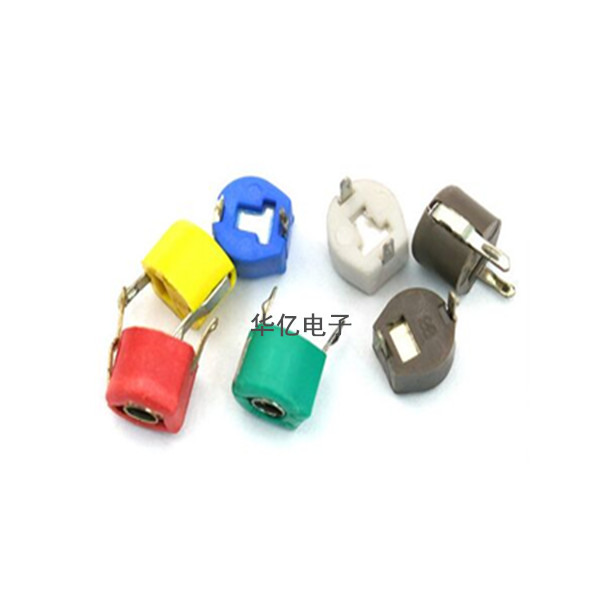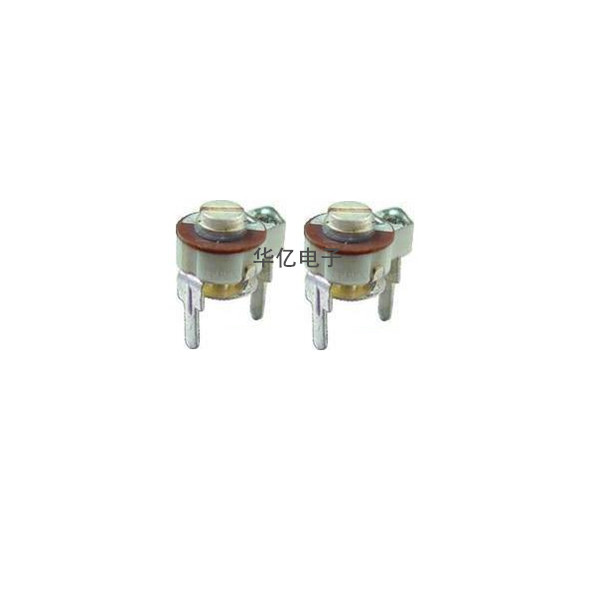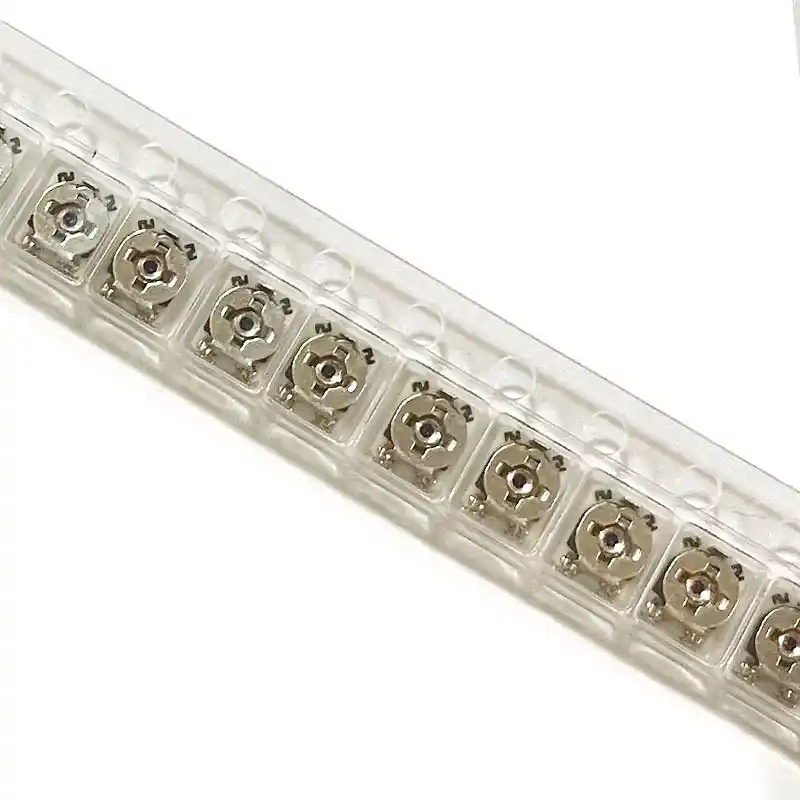The working principle of adjustable resistors (also known as potentiometers or variable resistors) is based on changing the resistance value through mechanical adjustment, thereby achieving the regulation of current or voltage in the circuit. The following is an analysis of its core working principle and key components:
1. Basic structure
Adjustable resistors typically consist of the following three parts:
Resistive element: made of conductive materials such as carbon film, metal film, wire wound resistance wire, etc., with a fixed total resistance value (such as a nominal value of 10k Ω).
Wiper: A movable metal contact that comes into contact with a resistor and adjusts the effective resistance by changing the contact position.
Adjustment components: such as knobs, slides, or screws, used to manually or automatically control the position of sliding contacts.
2. Working principle
Voltage Divider mode:
When an adjustable resistor is used as a voltage divider, its three pins are respectively connected to the input voltage (two terminal pins) and the output voltage (middle sliding contact). The position of the sliding contact determines the voltage division ratio of the output voltage.
Formula:
(为滑动触点与一端的阻值,为另一端的阻值)
Variable Resistance Mode (Rheostat):
When using only two ends (one end and sliding contact), an adjustable resistor is used as a variable resistance element to directly regulate the current in the circuit. For example, adjusting LED brightness or motor speed.
3. Key characteristics
Adjustment method:
Rotating type (such as 3386 series): By rotating the knob to change the contact position, it is suitable for precision adjustment.
Sliding type: adjustable through linear sliding, commonly used in volume control.
Multi turn: adjusted with multi turn screws (such as the Bourns 3296 series) for higher accuracy.
Resistance variation law:
Linear (Type B): The resistance changes linearly with the adjustment position (such as uniform volume adjustment).
Logarithmic (Type A) or exponential (Type C): The resistance value changes according to a logarithmic or exponential law, suitable for the non-linear perception of sound by the human ear (such as audio devices).
4. Application scenarios
Circuit calibration: Fine tuning circuit parameters (such as amplifier gain) in precision instruments.
Signal control: Adjust volume (audio potentiometer), brightness (backlight control), or temperature (thermostat).
Voltage divider circuit: used for sensor signal conditioning or ADC reference voltage adjustment.
5. Precautions
Life and stability: The wear of sliding contacts may cause resistance drift, and high durability materials (such as conductive plastics or ceramics) should be selected.
Power limitation: The power of adjustable resistors is usually low (such as 0.5W), and overload may burn out the resistor body.
Environmental adaptability: Sealed type (such as IP67) is suitable for humid or dusty environments, while open type is suitable for normal conditions.







